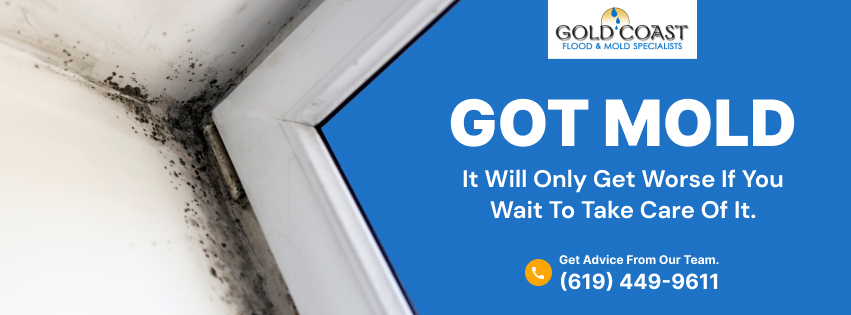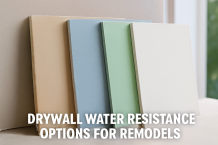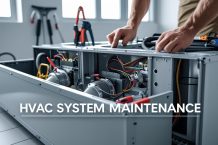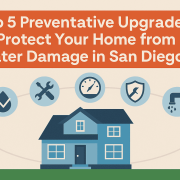Mold Abatement San Diego CA

When it comes to abating mold, it’s always best to hire a professional mold removal and abatement service.
However, if the mold in your home is not toxic and the area of mold growth is small (less than 10 square feet, or the equivalent of roughly a 3 by 3-foot patch) then you can perform the mold abatement yourself if you wish.
FAQ: Is mold abatement safe to do by oneself?
Answer: For smaller infestations (less than 10 square feet), with the right protective equipment and following guidelines, you can attempt mold abatement yourself. However, for larger infestations, or if the mold is toxic (like black mold), it’s recommended to hire professionals to ensure safety and thoroughness.
Mold Abatement Overview
The main steps in mold abatement are:
- Wear protective equipment
- Contain mold spores
- Set up negative pressure
- Remove the mold
- Prevent mold returning
- Clean belongings
- HEPA vacuum
- Dispose of the mold
Protective Equipment for Mold Abatement
A mold removal professional understands that the mold abatement process is one of the times when mold spores are most likely to be disturbed in the air.
FAQ: What is the difference between mold abatement and mold removal?
Answer: Mold abatement refers to the process of addressing and reducing the presence of mold, which can include containment, removal, and prevention measures. Mold removal is specifically the action of getting rid of visible mold from surfaces. Abatement is a more comprehensive process that ensures not only removal but also the prevention of mold recurrence.
This is why you should wear protective clothing and equipment while performing mold abatement. Protective equipment includes:
- Dust filter mask or respirator
- Goggles
- Gloves
- Protective clothing that covers your whole body and can be easily cleaned or disposed of

Contain Mold Spores During Abatement
If you need to remove a large amount of mold then you may decide to seal off the room to prevent any mold spores from spreading to the rest of the house. To seal off the room you are about to clean, use plastic sheets with duct tape to cover doorways, vents, and any other openings.
Negative Pressure While Removing Mold
You may also wish to use negative pressure in the room you are cleaning. To do this, run an exhaust fan blowing out of a window, or a partially opened door if you have to, to blow air outside of the house. This way, mold spores that are stirred up during the removal process should mostly end up outside. Also, make sure you turn off any air conditioning systems in the house before you begin cleaning up the mold.
FAQ: How long does mold abatement take?
Answer: The duration of mold abatement can vary based on factors such as the extent of mold infestation, the size of the affected area, and the methods used. Small areas might take a few hours to a day, while larger, more extensively affected areas might require several days or even weeks, especially if structural repairs are needed.
Removing the Mold
During mold removal, mold spores are most likely to be stirred up into the air. To reduce this, you should begin moistening any dry mold growth as dry mold will allow many more spores to escape into the air when disturbed. Use a spray bottle of water to wet the dry mold slightly.
After this, use a solution to remove the mold from the surface. Different solutions will work better for different surfaces.
Prevent Mold Returning After Abatement
Next, use a mold-killing solution to clean surfaces that had mold growth and even surfaces that were free of mold. All surfaces in the room will have some amount of mold spores on them. These mold spores can grow into mold later if moisture accumulates in the room again, so killing them will help prevent the mold from coming back.
FAQ: After abatement, can mold come back?
Answer: Yes, if the underlying causes of moisture or humidity are not addressed, mold can return. Proper abatement should include preventative measures, such as fixing leaks and ensuring proper ventilation, to minimize the chances of mold regrowth.
Cleaning Moldy Belongings and Materials
Non-porous materials (e.g. glass, metal, hard plastic) that once had mold on them can be used again after you have completely cleaned the visible mold from the surface.
For porous materials (e.g. drywall, carpet, books) that have had mold growing on them, you should decide whether they are salvageable on a case-by-case basis.
FAQ: How can I determine if the mold in my home is toxic?
Answer: While many molds can produce allergens, the term “toxic mold” is commonly associated with molds that produce mycotoxins, like Stachybotrys chartarum, or black mold. To accurately determine the type of mold and its potential risks, it’s best to have a sample tested by a qualified laboratory or consult a mold specialist.
HEPA Vacuuming
After you have removed the mold and disinfected the surfaces, allow them to dry completely. Once everything is completely dry, vacuum the room with a HEPA-filtered vacuum cleaner.
Disposing of the Mold
After the clean-up process, remove mold and moldy items, as well as the contents of the HEPA vacuum cleaner, from your home in completely sealed plastic bags.















Follow Us!